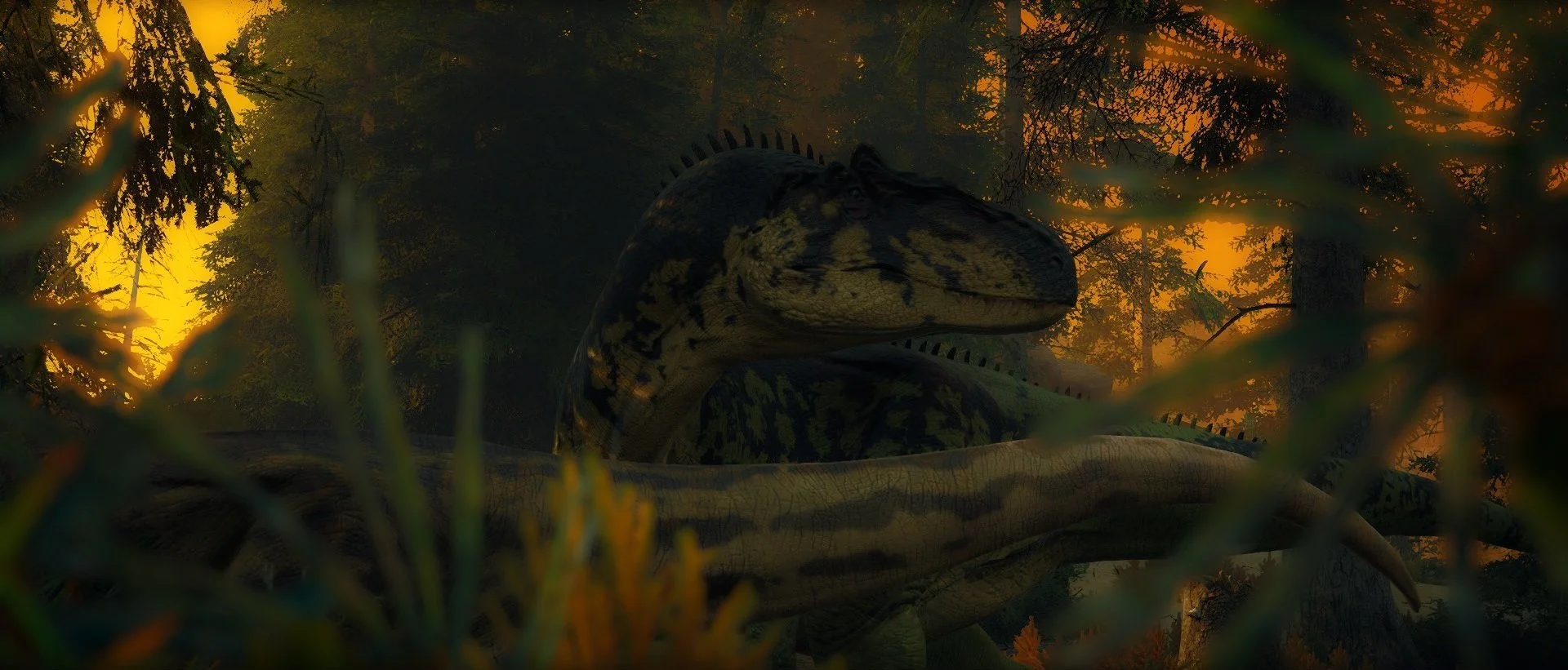Quetzalcoatlus
Tier: 6
Type: Flying carnivore
Passive growth time: 5 hrs 3 min
Flock size: 3 sub adults/adults, 1-3 juveniles/adolescents
Hierarchy: Bonded pair
Mating bond: Monogamous
Nest size: 1-3 offspring per pair
Diet tags: Carnivore, scavenger, semi-cannibalistic, opportunistic & ovivore
Preferred food: Tier 1-4 carnivores, herbivores & offspring of all carnivores & herbivores. Can only cannibalize when they have a group of 3.Behavior
These mighty azhdarchids spend a great deal of their lives closer to the ground than one might initially expect. They prefer marshlands, and areas generally swamped with shallow pools of water, only ever taking flight in short bursts in pursuit of prey or in escape from larger predators. They're incredibly communal creatures, and can be often found roosting together in each other's company in close proximity. Social interaction is an essential part of a Quetzalcoatlus life, and they may form strong bonds especially with their own adult offspring that often return to re-unite with their parents during brief seasons. They seem to also tolerate the presence of smaller pterosaurs hovering in their vicinity, and are generally undisturbed by them.
Recommended behaviors
╸Will flee most fights where they're at a considerable disadvantage.
╸Quetzalcoatlus are nomadic, they take to the skies to migrate to areas where food is in more abundance.
╸Quetzalcoatlus enjoy each other's company and will actively seek out social interaction.
╸They prefer to spend their time closer to shallow water sources.
Mating
Quetzalcoatlus are generally silent by nature most of the year until this silence is inevitably broken by the cacophony of crude and hoarse noises that fill the air during the mating season. Quetzalcoatlus gather in large, impressive colonies on steep cliffs where they may find their prospective mates to spend the rest of their lives with. The males will begin the long and arduous process of courting the females by clattering their beaks together while spreading their wings to impress their potential partners with their alluring patterns dotted along the insides of their wings. A great deal of their time during this season is occupied with preening their feathers to ensure their coats are kept as pristine as can possibly be deemed by doting females.
Nesting & offspring
Quetzalcoatlus prefer to nest in secluded lowland areas, nestled deep within thick forests where their nests may be kept hidden and protected from other predators. Their nests are often large platforms built out of the surrounding vegetation and sticks they scour for. Both the male and female take active and equal roles in the development and nurturing of their young, and will take shifts between hunting and protecting their offspring. Hatchlings are incredibly competitive and will fight each other for attention, care and food from their parents. Upon reaching maturity, most hatchlings will leave the nest and their parents in search of greater resources, with the exception of the one hatchling, naturally the biggest and most nourished of them all, that will remain with their parents until they're ready to venture out to seek their own mate.




